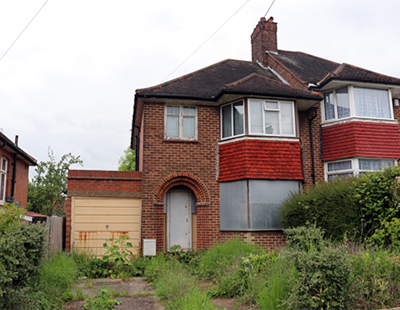
With analysis from property lender Together finding that, as of 2023, there are 1.55m abandoned residential homes worth £531 billion across England and Wales; TV presenter and property expert, Lucy Alexander of Homes Under The Hammer is shining a light on the UK’s property ‘Hidden Gems’.
By spotlighting regions and cities where abandoned and derelict buildings are on the rise, Alexander is encouraging the public to see these derelict residential or commercial sites differently – and has shared her top tips to help first time buyers and property developers as they consider renovating or restoring a building which needs that extra love and care and address the UK housing puzzle.
1. Check if the abandoned property has an owner - With research from the property lender, Together, finding one in 10 people are planning to purchase or invest in an abandoned or derelict building in the next few years; it’s worth knowing what to do if establishing who the owner is proves tricky. Firstly, it’s important to work out who the owner of the property is. You can do this by talking to neighbours or looking up the deed for the property. Once an owner is identified, the next step is to contact them to make a formal offer. Other ways to find abandoned houses include subscribing to auctioneers and estate agents’ auction updates.
2. Check the energy usage of the abandoned property - Confirming how much energy and running costs of an existing building before you purchase is critical. Set ample time aside to contact the supplier and check you are on the best energy tariff for the property. With Together finding 34% of people are currently planning to live in or rent out their refurbished abandoned building; this is even more important to consider ahead of time so as to budget accordingly and avoid any nasty cost shocks.
3. Check if the abandoned property is listed - If you opt to buy an abandoned or derelict building which is listed, this means consent must be applied before you make any major changes. To check if your property is listed head to The National Heritage List for England (NHLE) for confirmation of the building’s status, this is provided based on the given postcode. Once you have identified if your building is listed make sure to check which Grade it is as there are three different requirements for each.
4. Check which mortgage best fits the abandoned property - When purchasing an abandoned or derelict property, you may wish to consider using a bridging loan as these offer a short-term solution to unlock faster cash flow and ensure you don’t miss out on opportunities. These are particularly effective if buying an abandoned property via auction or via specialist property portals. In fact, Together is seeing a marked increase in these types of cases already this year with an increase of 10% of property bought at auction from 2022 until 2023. It’s worth noting that bridging loans are also a handy way to help access the renovation finances needed too.
5. Check your budget covers the abandoned property renovations - Renovating an abandoned or derelict property can quickly run up high costs unless you have careful budgeting and a strict finance plan in place early on. Depending on the structure of the site and scope of work needed; it can also be far more complex than doing the same for newer buildings. Working closely with your local council and authorities is recommended for these types of projects; particularly if you need to apply for special planning permissions.
6. Check the planning permission on the property - After purchasing an abandoned or derelict property it is important to think about planning permission. First and foremost, working with the local council on a pre planning application can aid to garner the support of the local authority planning team. This will help avoid delays and possible planning refusal. Not only this, but understanding the matters that councils are most sensitive to and addressing them head on by actively engaging with planners is crucial to ensure that permission on the scheme takes place smoothly. This is especially true with larger scale refurbishments that may involve a change of use to the property.
Lucy Alexander is ambassador for the UK wide Hidden Gems campaign – which is backed by property lender Together *










.png)










Join the conversation
Be the first to comment (please use the comment box below)
Please login to comment